The history of the very decorative and ornamental of all styles is Rococo. Description of the characteristic setting of the front mansion.
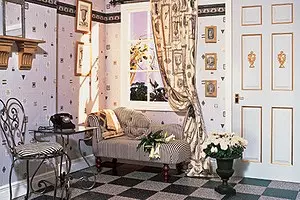
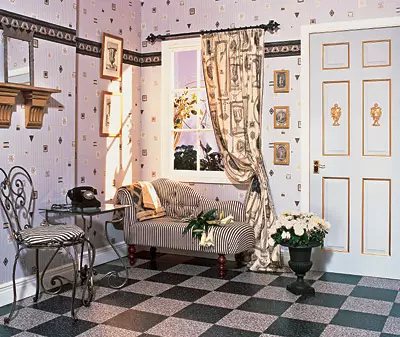
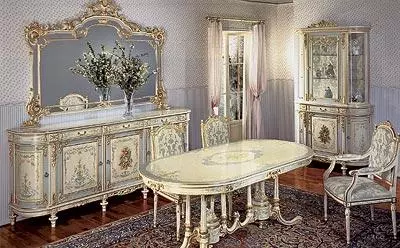
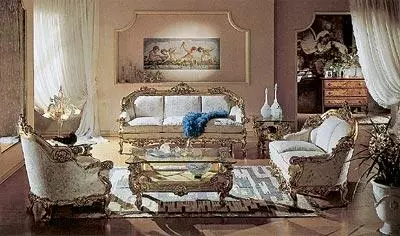
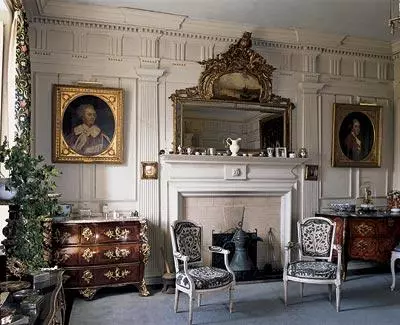
Rococo Interior Center remains a low fireplace, decorated with a subtle elegant relief. Over the fireplace, the decorator certainly places the mirror. Wall plane acquires expressiveness of decorative sculpture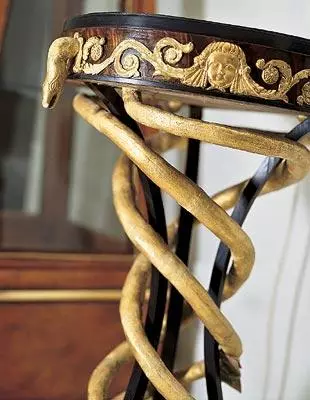
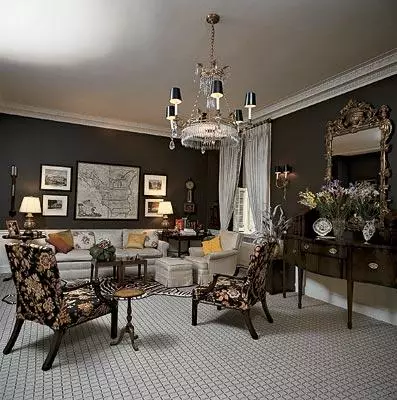
In the foreground, the composition of the upholstered furniture is naturally spread, the decorator wall placed an interesting combination of the fir-cantole and chest in chippendal style, such a revered by the British and so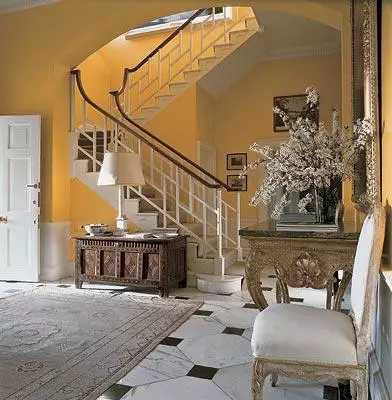
Rococo furniture is emphasized graceful and graceful. It is worth paying attention to how the harmoniously modern space of this hall has absorbed truly rocker objects of the situation. The combination of light tones and gilding with strict modern forms looks amazingly exquisite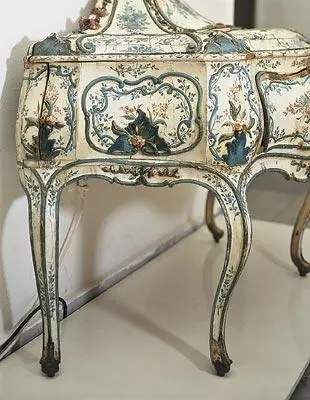
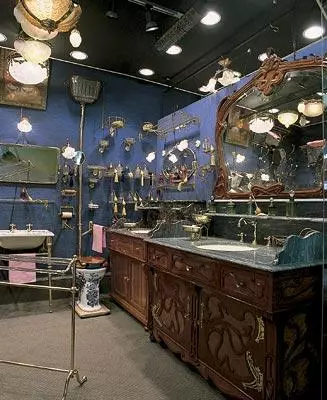
Rococo style is irrational, Caprician, moderately non-afficous, just enough to intriguate, but not so much to deprive comfort. Design of the washbasin decorator borrowed at a fashionable chest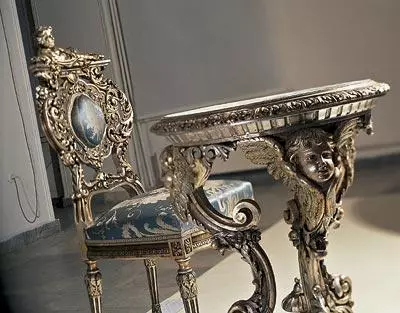
Remember the film with an exquisite name "Mr. Desurator"? Its authors recreate the era of modern, but the image and the "style of work" of the main character, which is called one for all time. It is Mr. The designer (or Mr. Decorator) is able to breathe life into the interior.
One who accepted to search in the dictionary meaning of the word "decorative" will surprise the many of his interpretations. We will dwell only on two of them- decoration and design. It is worth noting that it is in the Rococo era who is awarded the profession of the court architect-decorator. For the first time in the field of interior decoration, their "stars" appear, each (more precisely, each) of which are famous in their field, who are in the manufacture of chest of drawers, who are in the art of drapery and the selection of fabrics, who are in the painting of furniture.
In the practice of architects, the decorative interior solution will safely coexist with a constructive approach to the problem. The decorator puts the tasks of plastic and color, preferring the architectonics of the subject and space of their picturesque expressiveness. The nuances and items are important than the design. Speaking about the art of interior decoration, it is better to use the word "decorator", not the "designer", since it is the profession of the decorator assumes the creation of a whole interior image.
"Decorative" styles
In the history of the development of the interior, styles and directions are known in which decorativeness and ornamentality predominate are dominated, and the design of space and tectonics go to the shadow. The most decorative and ornamental style, of course, remains Rococo. It is to him, starting from the moment of his birth at the beginning of the XVIIIV, architects, artists and decorators constantly turn to any witty or spectacular decorative idea. The interior is first understood as entertainment, joke, creative self-expression "Mr. Designer". Therefore, Rococo is so often quoted by modern masters. It was this style that created a whole world of various drapes, floral ornaments, picturesque plafoons and inserts on the walls and furniture.The previous period with its excited forms, dynamically developing space and the emotional colorfulness of surfaces was replaced by the phase of limiting refinement. The luxury of Rococo style manifested itself in the outlines of furniture, and in the total colors, and especially in the awareness of decoration as an independent and self-concrete phenomenon in the design of the premises.
How many rococo styles?
In the furniture business from the beginning of the XVIII century to the 1730th, the so-called regency style is developing. Instozits and ornamenitics of items are partly saved by the features of the French baroque, although the forms become noticeably easier. The symmetry, but the placement of curls, garlands, bouquets and shapes free, which increases the impression of the interior in general, is dominated by the alpitable solution. The formed motifs have affected the love of inserts, lining, intarsions, varnishes. All the famous wizards rockey furniture - Roentgen, N. Pino, J.-A. Risenter, Sh. Cressan, gave tribute to the lush bronze, porcelain, scenic decor. Furniture of rectangular shapes almost leaves the front chambers, the main role is played by light, moderately elegant wave silhouettes and lines.
The Regency Style in the furniture is most fully expressed in the works of Charles Cressean (1686-1768). Cressean furniture workshop was famous for the manufacturer of marketer and various bronze linings. French courtery furniture workers with exceptional perfection were treated with valuable wood using rocks such as amaranth, pink and violet tree. Cresan furniture was abundantly covered with soaring bronze stalks of plants, leaves, colors. These decorations covered the handles of the chest of drawers, their legs and profiles. Sketches of bronze linings were performed either the furniture masters themselves, or interior decorators.
In the second quarter of the XVIIIV, Rococo style has already been mainly formed. Its appearance and development is associated with the name of Zh.O. Maissonia- Jewelera, the sculptor and architect, the decorator of the interiors and the author of numerous jewelry. Golden Age Rococo coincides with the Board of Louisv (1723-1774), and by tradition, this style is called the style of LouisXV.
Gilded carving in the form of shells and cartridges, the symmetric arrangement of jewelry is accompanied by rococo compositions of curls with flowers and ribbons. ASSEREDINE XVIIIVEK (about 1750) in the decor there is a characteristic complex of ornamental motives, which gave the name to all the style. In France, this style is called "Rokail" (SPR. Rocaille-finishing with slices of stone and sinks). In Potsdam, the Kurfürste Saxony Friedrich builds the adorable Palace of San Sust, where the magnificent and cheerful "Rococo Friedrich" flourishes.
Everything in Rococo was a small, elegant, graceful. Gradually, the passion for bronze linings and sculptural reliefs fades and is replaced by attachment to gentle light tones, temperate painting, light gilding and white lacise. The sign of the sophisticated taste in the furniture decor was inserts from Sevra Porcelain, miniatures, painting on glass, oriental varnishes. All this, taken together, got the name "LouisVi style" style.
Nowadays, Louis XVI style is almost literally reproduced by the Italian companies Colciago and Silik in the series of living rooms, canteens and sleeping heads. Obviously, making the interior in the spirit of one of the Louisovikov, the decorator inevitably creates the situation of the game and postmodern quotation. The interior of postmodernism is associated with the interior of Rococo and the mood of thoughtful playliness. Rococo style is irrational, capricane, moderately non-functional - so much to intrigue, but not to such an extent to deprive comfort.
The completion of the style in France is associated with the name of the furniture masters of Abraham and David X-rays that have supplied furniture to all European yards. The specialty of David Xentgen was the manufacture of furniture with secret mechanisms and marquetry decor. The most beautiful samples made of light wood with bronze inserts were called "X-ray style".
In England, Thomas Chippendale (1718-1779) did a lot to the development of the style. His name was especially popular after the release of the book "Director" ("The Gentleman and CabinetMaker's Director"), which included 160 engraved furniture projects. Chippendale acquired great fame and as a practitioner who heads the workshop for the manufacture of furniture. The company was engaged not only by the production of individual items, but also by the decision of the interior as a whole. For example, in one of the places, the workshop of Chippendale, everything, up to the door hammers, was made on the project and under the supervision of the head of the company. Chippendale himself followed the performance of work and took care of the supply of decorative decoration - mirrors, hours, carpets, tapestries ... Chippendal existed more than half a century. The original creative ideas of her owner complemented French and Chinese motifs and at the same time inspired by the English gothic.
Chippendale's style was distinguished from French Rococo and the furniture corresponding to it. Now we can say that as the chippendale decorator possessed postmodern interior vision, bravely combining in the created rockey and gothic items. All materials of the maestro preferred Mahagony (Red Tree). For the first time in England, the Red Tree was introduced into furniture production in 1720. His appearance is associated with the development of colonial trading. Thanks to its color, tone depth, wealth texture, it quickly gained popularity.
Chippendale invented special reading tables, round folding tables for breakfast, original slides. He did the chairs in Chinese samples, with simple straight legs, but in the decoration of the backrest and curved in the form of a confusing weaving ribbons, cords, colors and leaves - gave fantasy will. The objects of bent forms with a wide frontal part had legs with orline claws, compressing ball. Sometimes the eagle claws were replaced with a lion paw. Wangly was especially strongly fascinating Chinese art. Beds usually had cavalry in the form of a Chinese pagoda. An honorable place in the office occupied a variety of writing tables and high outdoor hours. All these features created the English interior reputation for solid and individually discreet.
Workshop
We will try to reproduce the characteristic setting of the front mansion in the style of the Rococo - the most fashionable for this period. First of all, we will define the type of premises.The apartments differed toilet rooms (lovers and chemmers in the first place), Baora, Bedrooms, Working Rooms, Libraries, Parade Halls and Servants for Servants.
Our imaginary decorator makes sense to start rockey escapades not from the layout of the interior, but immediately from its furniture. Rococo style playful, light, even carnival, and therefore allowing you to choose a free layout of the premises.
Much more important in this case, the problem of the ensembleness of things and accessories. The idea of the interior as a holistic ensemble originated in the Rococo era. Architects in their projects sought to achieve the full decorative unity of all components of the room: paintings and ornaments of walls and ceilings, floor decorations, furniture forms, colors of draperies and upholstery fabrics.
So let's start with the living room
In the living room stood a table laid out a table for games, often folding. For different trifles, small rounds of GUERIDON (GUERIDON) were used. All of them were different forms, but had one common line: the table composition was solved as purely ornamental. This was facilitated by a variety of bronze jewelry, which were placed in places of fastening legs, on the king. The rocial ornamental console by this time completely displaced the architectural form of the baroque table console.
Furniture for seating, lying and "midstage" gradually becomes comfortable and varied. Kdivan with a closed back, called "Berger" (Bergere), was added to the chaise lounge in several types: for example, a "Turquoise" was called an unlucky wall in his feet, and supplemented with soft armrests- "Veyise" (Veilleuse). Usofa were S-shaped curved solid side walls, they were performed through the canape. The so-called marquise appeared, which was a short half-hearted with carved curved side walls. Marquis reminded ottoman, but the last side walls were semi-circular.
The upholstered furniture was most often symmetrically located along the walls, or spectacular picturesque groups in the center of the living room. It is worth paying attention to this, because the placement of furniture with picturesque "islands" answered precisely decorative tasks.
The chests and cabinets with the beginning of Rococo were ruthlessly expelled not only from the living rooms, but also from bedrooms and were preserved only in mesh-houses. The existence of the aristocracy of universal sympathy used the chest of drawers (SPR. Commode- Comfortable), often with two angular lockers. The form changed it repeatedly. First, the facade was made by wavy, with symmetrically located bronze linings; The lower edge was cut in the form of a semicircle. The tracking of the contours and profiles of dresser are becoming increasingly complex, and the intercuses and bronze ornaments are increasingly lush, located along the entire surface of the drawers.
Our small rocial boudoir is less diverse than the living room, but not less exquisite. Vkuduar is absolutely necessary for toilet table, Table de Toilette, later it was called Poudreuse (PooDona). Flies and empty wigs require the relevant environment! Pompadour style in the setting indicates all elegant, playful, richly decorated. We will also need a special elegant Ladium Bureau or a secret in high slender legs with an inclined folding board and a multitude of secret departments. The most "advanced" secular fashionists have also become cardboard rooms (cabinets for papers).
Unlike miniature ladies' business furniture, the desk-bureau in the working office of the host should be large and massive. It was made from a rosewood or violet tree. The decorator offered to choose from a Bureau Plat flat shape or a cylindrical bureau with a lid-blind.
In the bedroom, its highness is still dominant, which is all the graceful and graceful day. Its forms Architect Decorator interprets both ornamental, bizarre and capricious. The names of the bed are obtained in accordance with the character of the Baldakhin as the most important decorative element. Thus appeared beds alohinoise, alafrancaise, al'anglaise, al'italienne.
The center of the rockey interior, despite its all its irrationality, the fireplace remains. Only now it is low, decorated with a subtle graceful relief. Over the fireplace, the decorator certainly places the mirror.
For marquetry in Rococo style furniture, expensive wood species are used: red and pink tree, rosewood, amaranth, palm tree, lemon, apple tree, pear, maple, nut, etc. French furniture makers rarely resorted to artificial color and burning wood, originally choosing the desired natural pattern.
Interest in the art of the East manifested itself not only in solving the interior as a whole, but also in the interpretation of individual furniture products. French masters use Chinese things in their works: for example, Chinese porcelain vases they are subject to bronze, and Chinese lacquer boards insert into new furniture. Exotic tastes Rococo affected the immense popularity of varnish furniture. The French become the main importers and simulators of Japanese and Chinese varnishes. The decorative wealth of "Shinoazri" ("Chinese") Many decorators - from the sophisticated stylitizers, "Orientalists" to the coachable adherents of pop art - apply to this day.
Accessories and decorative details
Mirrors, clock, china. The playful and scattered nature Rococo simply obliges you as a decorator to fill the interior with cute non-functional trifles, so inimitately decorated and complicating life. Rococo, unlike pompous Baroque, not easy to fit in the front halls, but in small intimate interiors. The many mirrors were ingenious and intricately distributed their volume. The gloomy black tree disappears, and the mirrors are covered with garlands, cupids, sinks. The mirrors are commissioned into the walls of the walls, compound with table consoles. Fireplace mirrors are sometimes composed of two parts. Fallowd on the mirrors in the style of "Shinazri" Europe is decorated with them from fireplaces to cosmetic boxes. All architects and decorators are engaged in the reflecting planes and decorators - the designs of the mirrors will diverge in the gravar sheets. Decorators Pinot, Maissonier included in the furniture headsets created by them also watches playing the role of an animating addition to the chests, tables, mirror surfaces.Coloristry solutions should have created the impression of lightness, festivity. Decorators prefer combinations of white and blue, white and light green or pink, that is, the entire pastel range, the most sophisticated tone relationship. Mandatory belonging of the interior of the style of a rocker-moderate gilding. The most expensive exotic breeds of wood, marble, bronze, gold, silk, tapestry apply the most expensive decoration of interiors. These materials go to the decoration of walls and decorative panels. From China to Europe came fashion on paper wallpaper. Walls, painted by paper, often painted well-known masters.
Variations on the topic "Pompadour" in modern conditions are easily reproduced, because the whole decorativeness of Rococo is laid in three components:
1) the color of the room,
2) furniture of historical forms,
3) Stylish accessories.
Accessories in the Spirit Rococo can be purchased in stores and antique salons gradually, entering the taste of the era of powdered wigs, flirty flies and sophisticated chemmers. In addition to genuine works, attention deserves accessible by the price of the so-called "second rococo" (arising in the sixties of the XIXVEK) and modern replicas. Fashionable variations from expensive materials on the topic of historical styles (inters and Rococo) produce GRILLY, SILIK, DONATIGASPERINI, COLCIAGO, CL-Italia, Elldue, (Italy), Techinova, Schuller, Wingchair (Spain). It is also the most important thing - when creating a modern version of the interior of Rococo Mr. Decorator and a designer can choose an individual theme: drapery or textiles, painting on furniture or china.
Phrasebook Mr. Designer
Bandelverk - ornament from woven tapes.
Border - The edge of the fabric, carpet, tapestry with an independent patterned ornament, which tilt simultaneously with the main web.
Drapery - Fabric, curtain, descending with decorative folds.
Knorpel - The ornament of Dutch origin, which meets primarily in the thread. The name is associated with the form of an ornament composed of the "swollen" wolves resembling shells.
Lambrequin - Original cover with edges and tassels, curved like languages. Later - the way of drapeting the fabric with horizontal and vertical folds. The fiber Rococo was also used as a decorative motive in architecture, painting, applied art.
Nastinnik - lamp with wavy brackets; Placed on the wall, wall facing or individual furniture items.
Pendel - Decorative suspension in the form of droplets in lamps and chandeliers, especially fashionable in the Rococo era.
Rocail - Decorative Rococo Motive. It is an asymmetric ornament in the form of a sink.
Rolver - Ornamental motif of intertwined ribbons.
Festoon - Ornamental motive in the form of garlands from flowers and leaves, sent to ribbons.
Tsarga - Frame of tables and seats.
Elements for shooting are provided by ColomBostile and the All-Russian Museum of Decorative and Folk Art.
